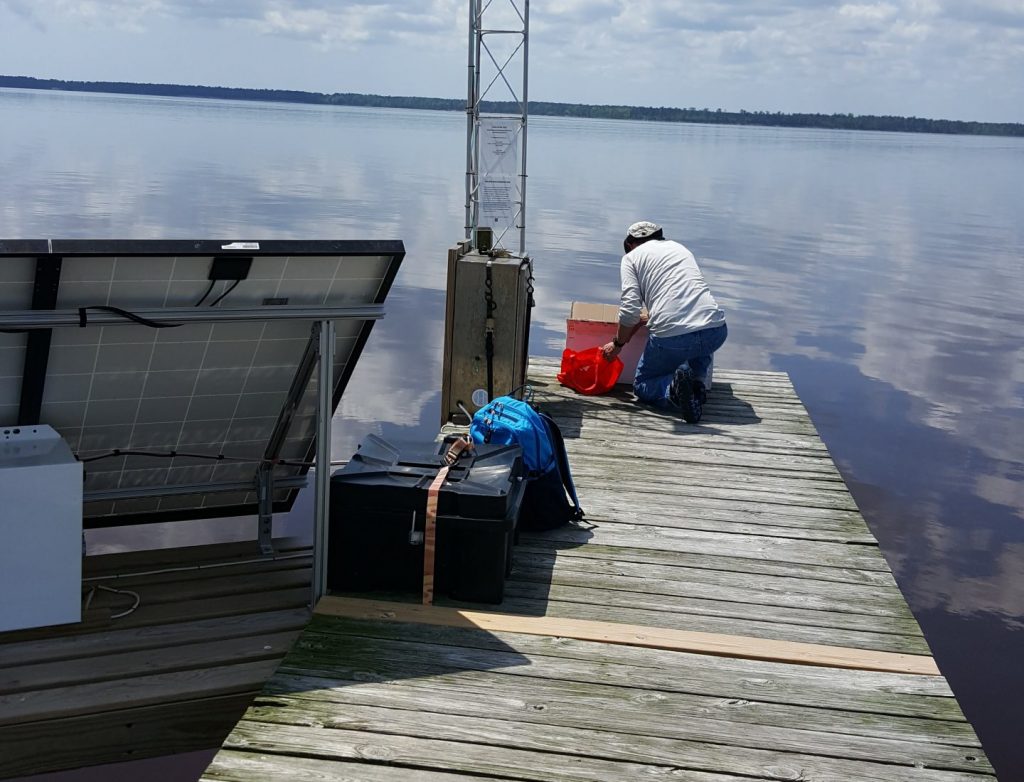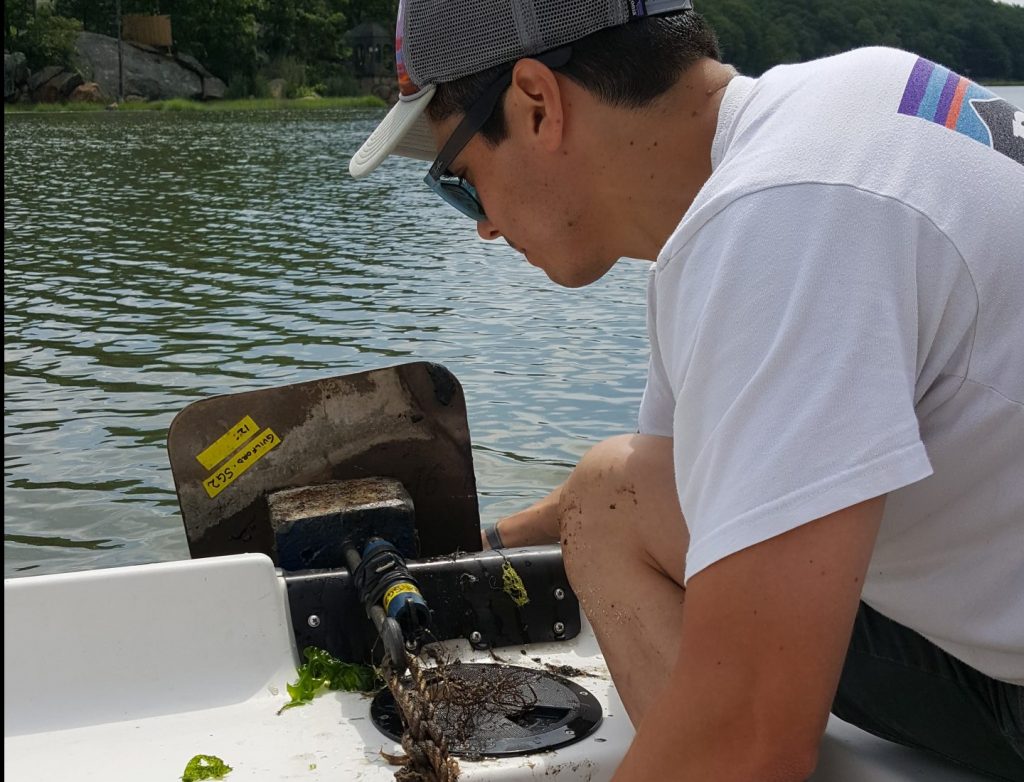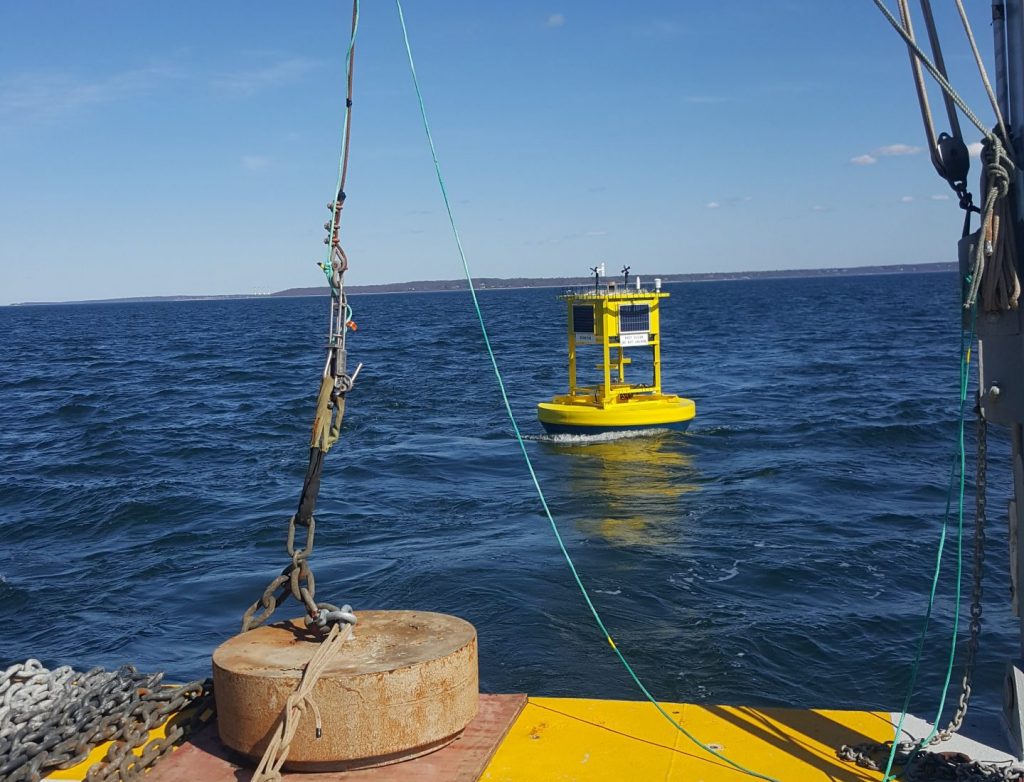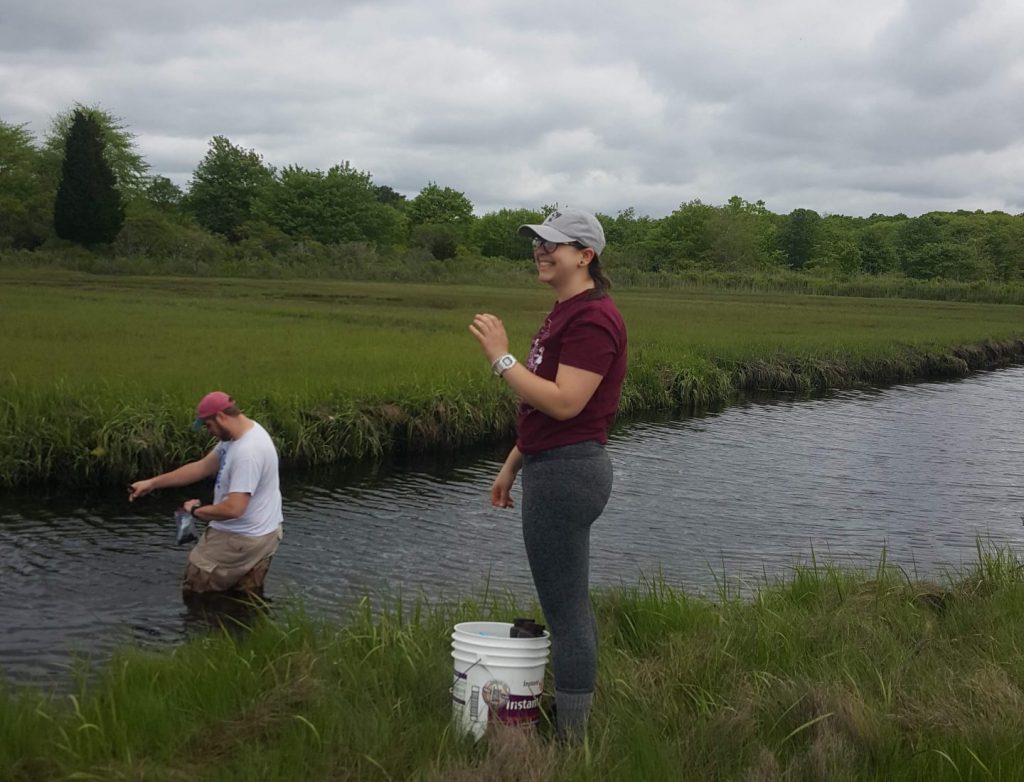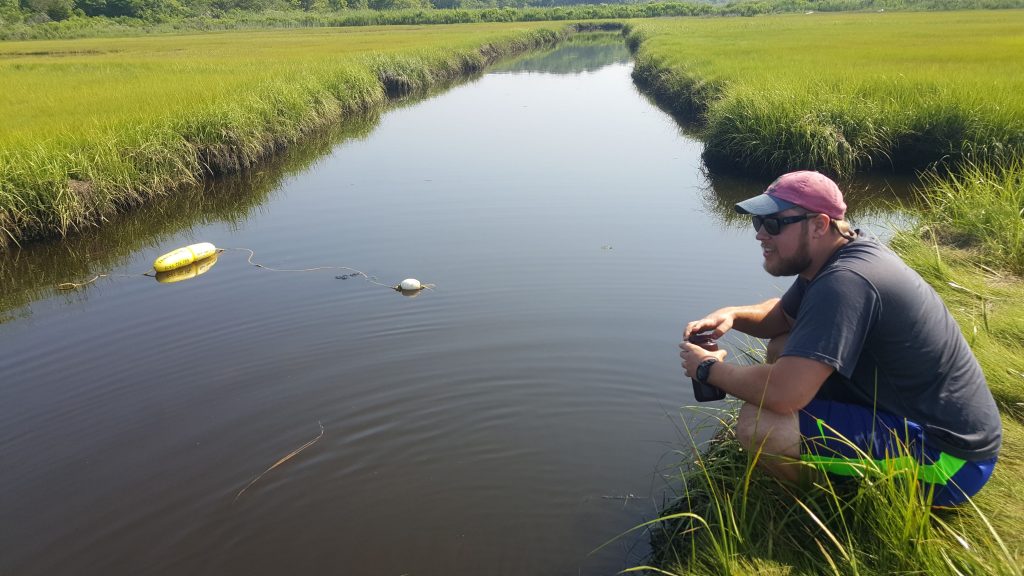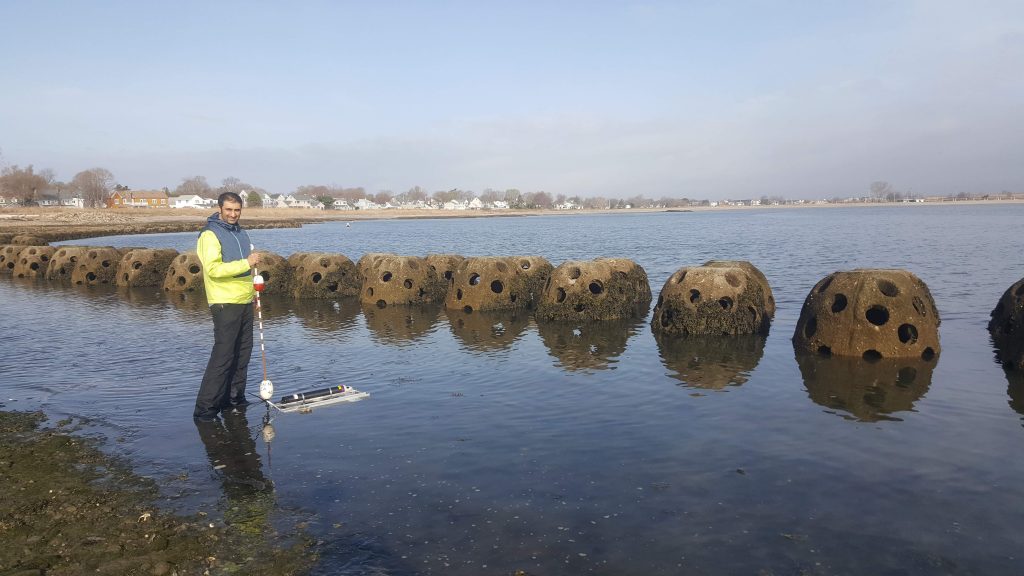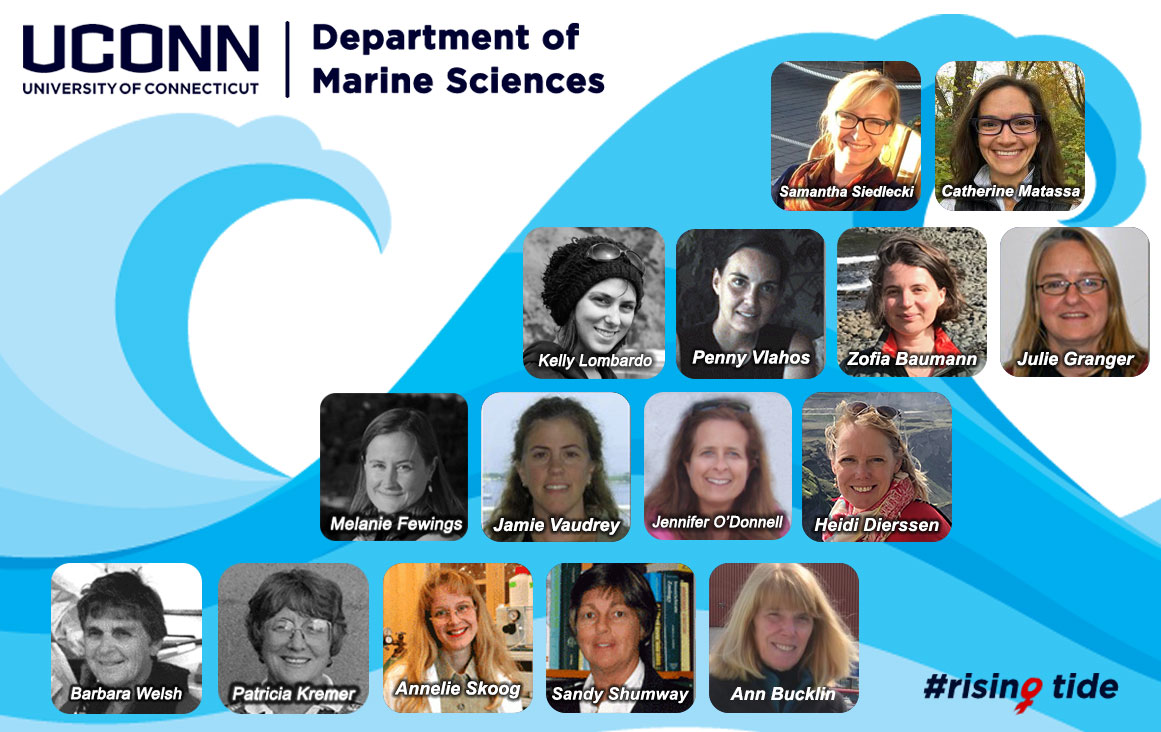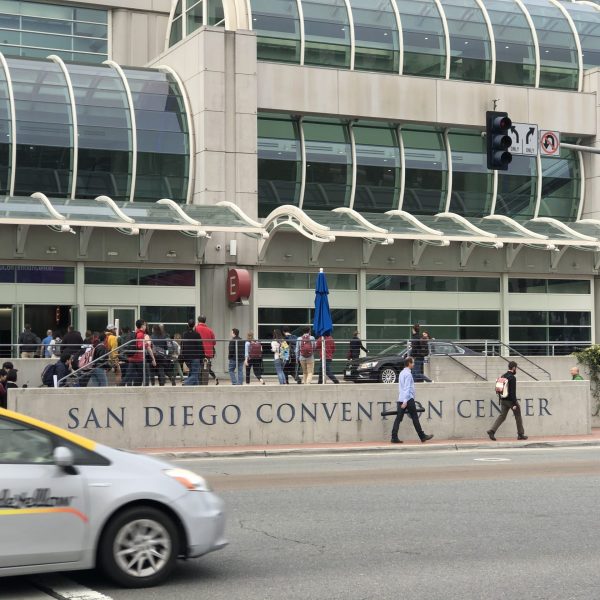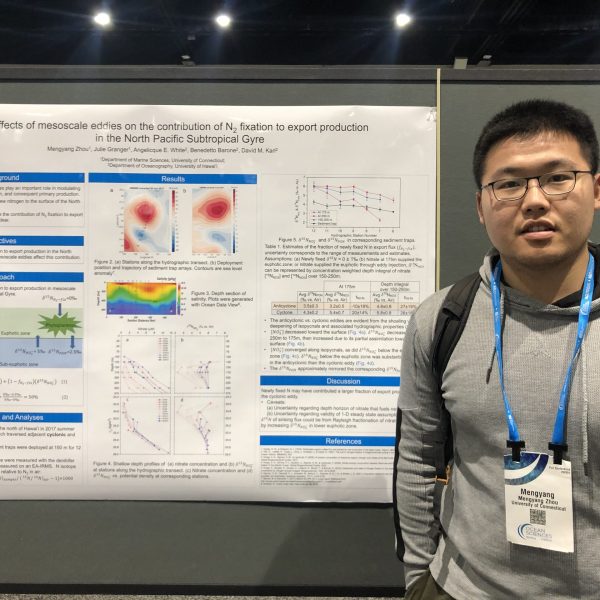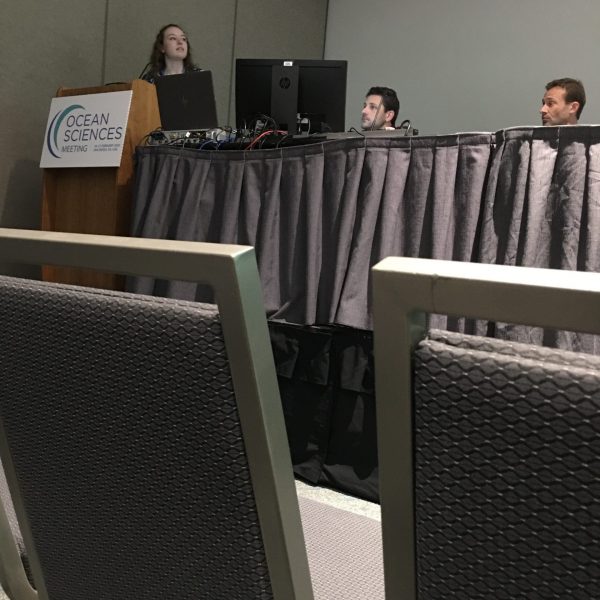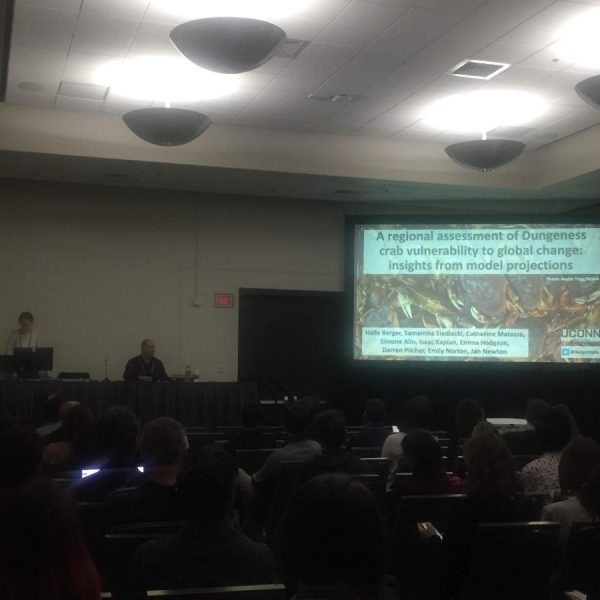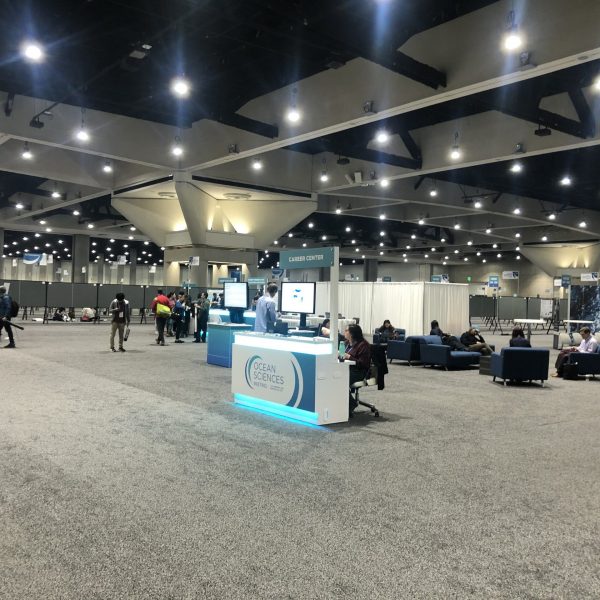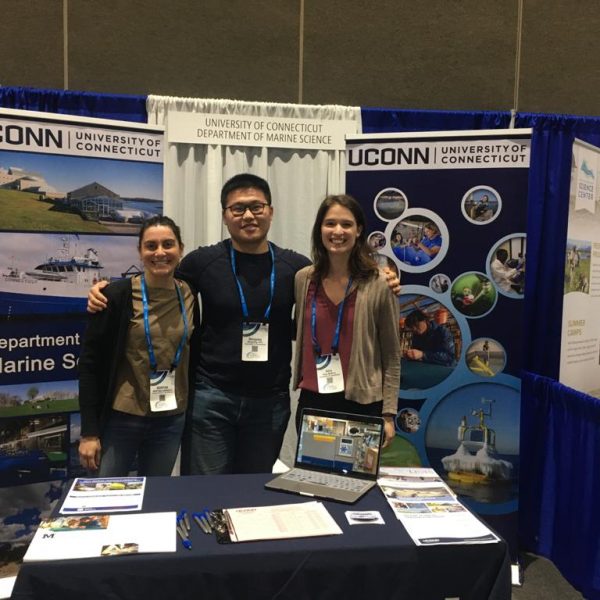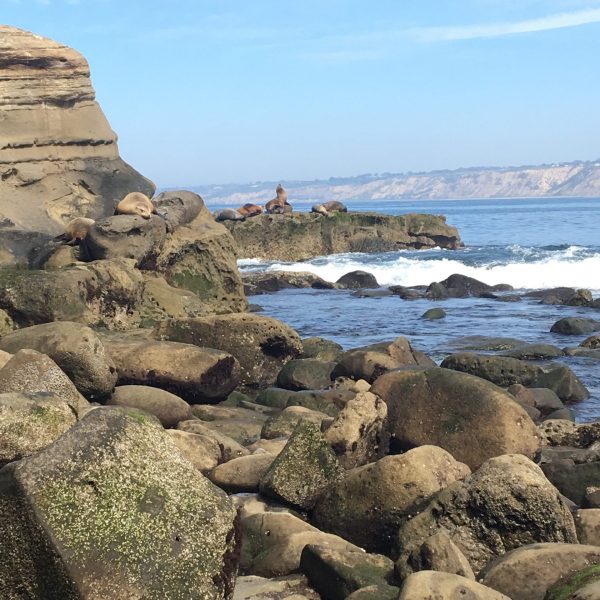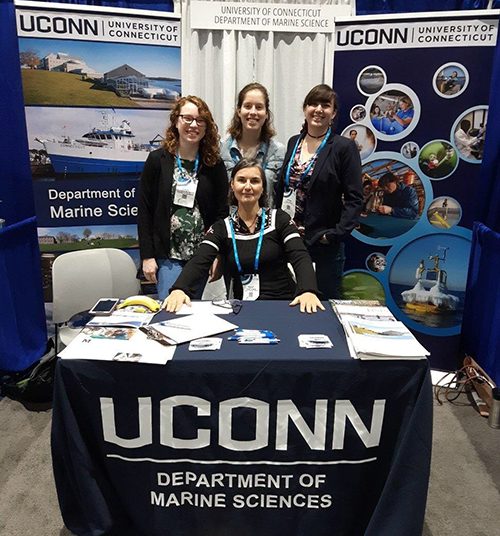CT Closer to Establishing National Research Reserve
The National Oceanic & Atmospheric Administration recently announced its approval of a network of state-owned properties and coastal waters in Lyme, Old Lyme, and Groton to be the site of the state’s first National Estuarine Research Reserve (NERR).
Read the complete article here: https://today.uconn.edu/2020/04/connecticut-closer-establishing-national-research-reserve/
New Faculty Member: Dr. César Rocha
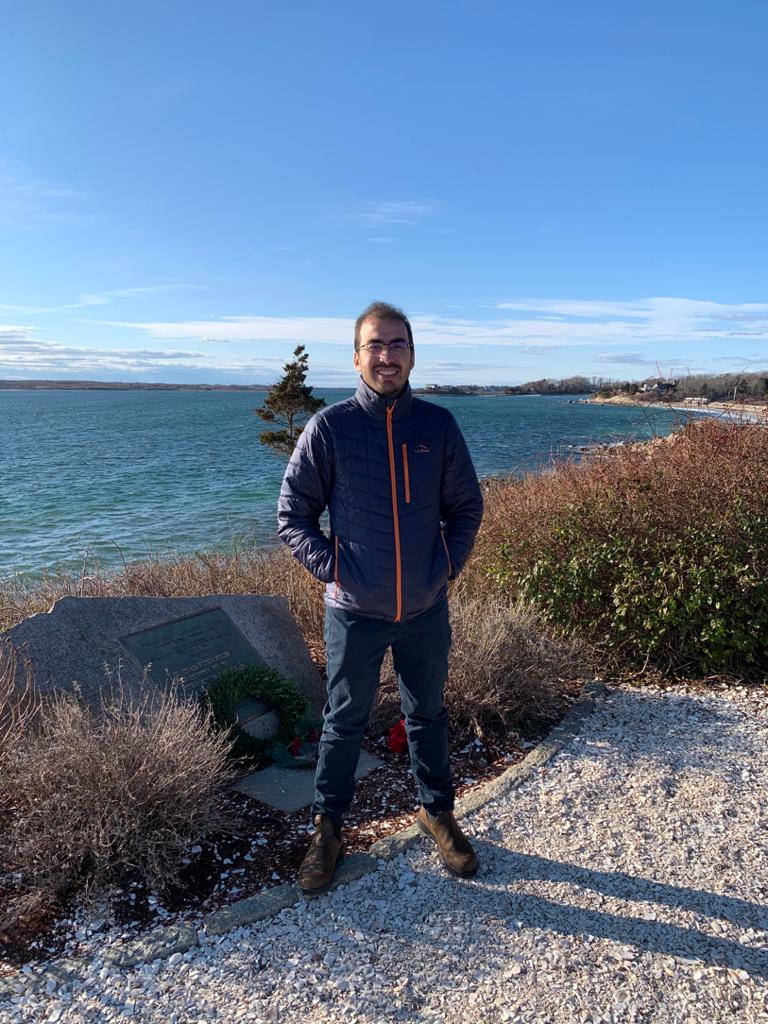 Later this year, Dr. César Rocha will be starting as a new assistant professor in the Department of Marine Sciences (DMS). DMS has been searching for new physical oceanographers to join the ranks of the faculty. It is with great enthusiasm that we welcome César to the University of Connecticut and to the scenic Avery Point campus.
Later this year, Dr. César Rocha will be starting as a new assistant professor in the Department of Marine Sciences (DMS). DMS has been searching for new physical oceanographers to join the ranks of the faculty. It is with great enthusiasm that we welcome César to the University of Connecticut and to the scenic Avery Point campus.
Professor Rocha is currently a postdoctoral fellow at the Woods Hole Oceanographic Institution. In 2018, he received his Ph.D. in Physical Oceanography from the Scripps Institution of Oceanography at University of California, San Diego. Before then, he studied at University of São Paulo in Brazil, where he completed his B.S. in Oceanography and M.Sc. in Physical Oceanography.
Rocha, who hails from Brazil, reflected that his childhood played a large role in his decision to study the ocean. “Even though I grew up in a landlocked city, I used to spend every summer in my family’s house on Brazil’s Green Coast.” He continued, “in those lengthy vacations, I developed an awe for the ocean and this led me to pursue oceanography in college.”
He started oceanographic research as an undergraduate and “never stopped.” Along the way, he is glad to have had “wonderful mentors” to help shape his academic and professional career. Currently, Rocha’s research interests lie in mesoscale and sub-mesoscale flows in the ocean. This scale ranges from 1 to 100 kilometers and includes features such as eddies, fronts, and filament flows of the mixed layer and pycnocline, the layer of the ocean characterized by large density differences. Flows may originate at large scales and cascade to smaller ones, which mix the ocean and cause turbulence. Rocha explains, “Turbulent oceanic flows are responsible for both horizontal and vertical transport of properties such as heat, freshwater, nutrients, and biogeochemical tracers.”
While in graduate school, Rocha was a NASA Earth and Planetary Sciences Graduate Fellow. At UConn, he will continue his relationship with NASA through two NASA-related projects. The first will investigate sub-mesoscale eddies that are generated near topographic features on the ocean floor, which is a part of the Surface Water and Ocean Topography (SWOT) Mission. The second will be with the Submesoscale Ocean Dynamics Experiment (S-MODE), in which he and collaborators will deploy a flotilla of Saildrones, wind and solar-powered uncrewed surface vehicles, to study vertical transport in kilometer-sized fronts of the California Current.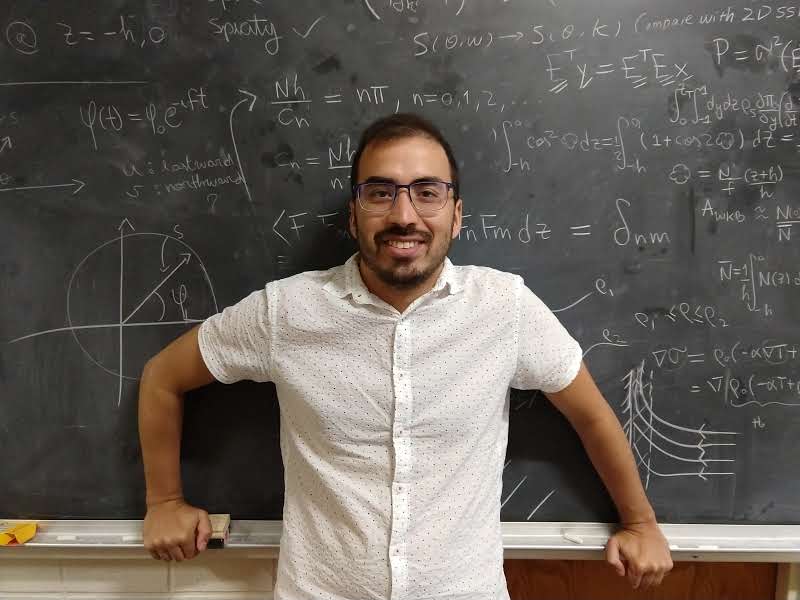
Beyond research, Rocha is enthusiastic about teaching and mentoring. “I enjoy breaking down and distilling complicated concepts and explaining them to others,” he said. “I am committed to continuing to develop myself as an effective instructor.” He plans to create a new hands-on course called Research Computing in Marine Sciences, in order to teach data science and analytical tools in Python.
Rocha is looking forward to the personal and interdisciplinary community at DMS. “I like the idea of being in a department that is big enough to have a robust graduate and research programs, yet small enough so we get to know everybody,” he said. “I am eager to interact with colleagues from all areas of marine sciences.”
In his spare time, Rocha is working on his culinary skills. He also voraciously reads in both English and his native Portuguese. One of his favorite American publications is The New Yorker, for its fascinating and well-produced content.
Meet Kay Howard-Strobel, Research Associate

On the first floor of the Marine Sciences Building, it’s hard to miss the office door belonging to Kay Howard-Strobel because of its humorous sticker, “SAVE THE CRABS, THEN EAT ‘EM.” If you haven’t met Kay, you’ll probably be familiar with some the activities she’s been involved with at Avery Point.
Kay received her bachelors from the University of Mary Washington, where she majored in biology and geology. Then she completed her masters from the Virginia Institute of Marine Sciences (VIMS) in marine geology. Her thesis looked at Chesapeake Bay mud by using spatial autocorrelation to characterize dredge disposal sites in the Chesapeake Bay. “I found sand and mud was even way more fun than rocks and minerals,” she commented.
How Kay got to UConn is an interesting coincidence: “While at VIMS – one of my advisors hosted a visiting professor named Frank Bohlen,” she said. “After graduate school, I moved to Rhode Island with my husband and sent Frank a letter – and here I still am.” For 30 years, Kay has been a researcher in DMS, the first half working with Frank and second with Jim O’Donnell.
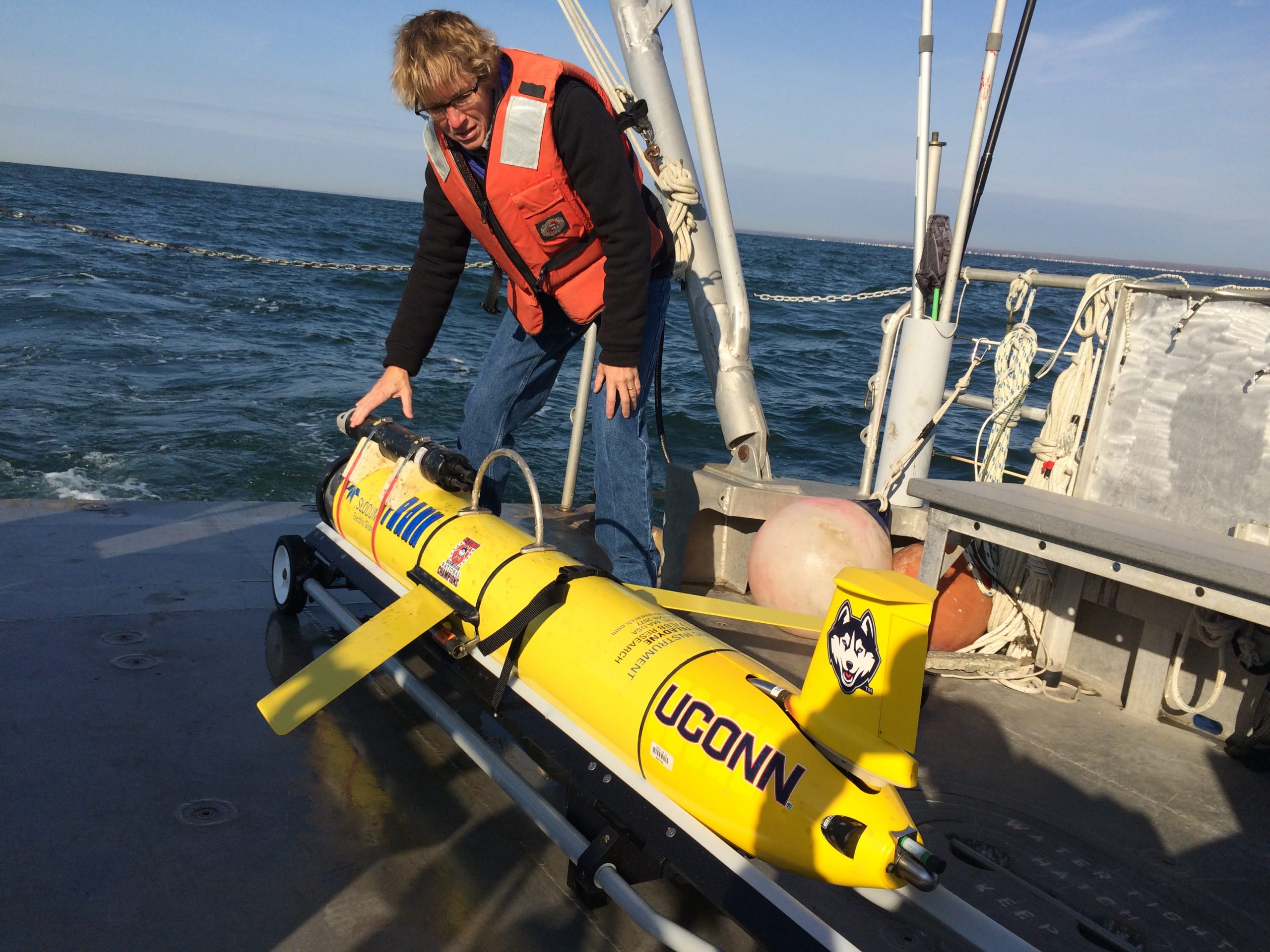 Currently, Kay manages, maintains, and configures various oceanographic instruments for field observations, including portable and mooring Acoustic Doppler Current Profilers (ADCPs), profiling and stationary Conductivity-Temperature-Depth (CTDs) sensors, suspended sediment sensors, Autonomous Underwater Vehicles (AUVs) and gliders, nutrient sensors, buoys, and more.
Currently, Kay manages, maintains, and configures various oceanographic instruments for field observations, including portable and mooring Acoustic Doppler Current Profilers (ADCPs), profiling and stationary Conductivity-Temperature-Depth (CTDs) sensors, suspended sediment sensors, Autonomous Underwater Vehicles (AUVs) and gliders, nutrient sensors, buoys, and more.
Kay deploys and recovers these sensors on all types of field campaigns too. Work in the field is very weather dependent and preparation constant, so she is ready to go on a moment’s notice. The variety of field work Kay has done is staggering. She said, “Every project is memorable in some way, shape or form… whether traipsing through marshes and walking amongst reef balls with graduate students, deploying buoys in western LIS off the R/V Connecticut at the crack o’ dawn, squeezing under bridges on the Maritime Skiff, riding flood-gate currents in a johnboat, or running CTD profiles down the Sound on a flat, calm summer day on the Osprey… they’re all good.”
Throughout her three decades at UConn, Kay has been a part of many significant observational projects. One in particular is the Long Island Sound Coastal Observatory, now know as the Long Island Sound Integrated Coastal Observing System (LISICOS). Initially, it started as a buoy in the Thames River that transmitted data in real-time back to Avery Point, which she and David Cohen developed. Now, LISICOS is an interdisciplinary network of buoys, radar, weather stations, and water quality measurements. Public, private, and state users have to come to rely on that data for recreation, policy, and monitoring
Kay also enjoys CrossFit and playing soccer. She is one of the longest standing, most valuable members of the Department’s Friday afternoon pick-up soccer games.
DMS is enriched by and fortunate to have Kay Howard-Strobel as an expert observationalist in our midst.
Marine Sciences History: Growing Towards Gender Equality
It has been over 50 years since the University of Connecticut established Avery Point as a regional campus and nearly 40 years since the formalization of the Department of Marine Sciences (DMS). At that time, national feminist and civil rights movements were in full swing as well. In the decades that followed, especially the past 20 years, a primary focus of these movements has been increasing and retaining diversity in science, technology, engineering, and mathematics (STEM), which includes oceanography. Since the early 2000s, DMS has successfully narrowed the gender-gap among faculty members.
Barbara Welsh was the first female faculty member in DMS. She was hired in the 1980s and helped establish hypoxia monitoring and nitrogen management programs in Long Island Sound. Her research revealed phytoplankton blooms and the resulting alarmingly low oxygen concentrations in Western Long Island Sound in the summer.
The next female professor to join was Annelie Skoog, who studies marine organic matter cycling. Another early female leader was Associate Professor in Residence Patricia Kremer, who studied gelatinous plankton. After Barbara retired, Annelie remained the only tenured female faculty member. All other women faculty were research scientists and not professors. The most common title being Research Professor, with levels assistant, associate and full.
A few members of the department recalled a faculty meeting in 2002, in which half the members present were women. However, as the only female tenure-track professor present, Annelie was the only woman allowed a vote.
As a part of larger UConn initiatives to promote diversity and opportunities for underrepresented groups, DMS sought to grow as a department and recruit talented new faculty for hire. In 2005, Ann Bucklin became the first female department head and lead many efforts to formalize department proceedings.
Since then, Heidi Dierssen, Penny Vlahos, Julie Granger, Kelly Lombardo (who moved to Penn State University in 2019), Melanie Fewings (who moved to Oregon State University in 2018), Samantha Siedlecki, and Catherine Matassa have joined the tenure-track faculty ranks.
Additionally, Sandy Shumway, Jamie Vaudrey, and Jennifer O’Donnell have been members of the research faculty and key contributors to the Department. Claudia Koerting has been an integral part of developing the undergraduate program and maintaining instrumentation. A partnership with Mystic Aquarium added four women – all active and successful marine researchers – as affiliate faculty-in-residence: Tracy Romano, Maureen Driscoll, Laura Thompson, and Ebru Unal.
 After conversations with many of these stellar scientists, it became clear that the culture in science overall has shifted greatly. Both Claudia and Penny commented that neither of them had any female professors throughout their entire academic careers. Whereas current graduate and undergraduate students can attest that female professors in the sciences are now entirely usual. However, disparities among different scientific disciplines remain. Today, the percent of people in physics and engineering identifying as female at the doctorate level is approximately 20% (Women in Physics and Astronomy 2019 Report, American Institute of Physics).
After conversations with many of these stellar scientists, it became clear that the culture in science overall has shifted greatly. Both Claudia and Penny commented that neither of them had any female professors throughout their entire academic careers. Whereas current graduate and undergraduate students can attest that female professors in the sciences are now entirely usual. However, disparities among different scientific disciplines remain. Today, the percent of people in physics and engineering identifying as female at the doctorate level is approximately 20% (Women in Physics and Astronomy 2019 Report, American Institute of Physics).
The culture that has been cultivated and continues to grow in DMS strives for diversity, inclusion, and equity on all academic levels including students, staff, and faculty.
On a final note, here are some statistics based on current departmental records. As of April 2020, all four research staff, six of eight postdoctoral research associates, 7 of 18 tenured or tenure track faculty, and four of five research faculty are women.
Ocean Bacteria Make Nutrients Out of Air
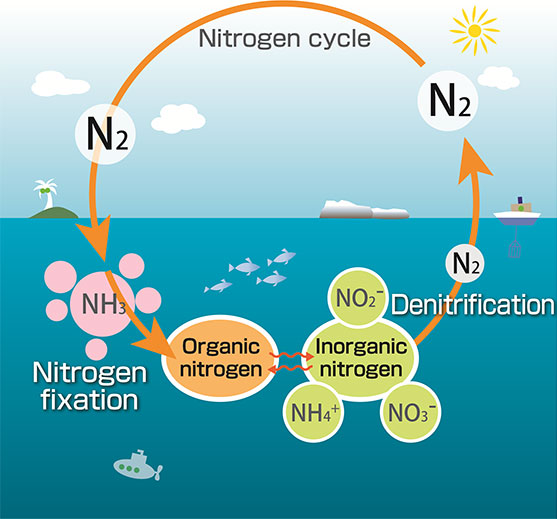
It’s finally springtime in the Northeast USA, so gardeners are looking to fertilize their plants and flowers. Have you ever stopped to wonder what is actually in the big bags of soil you spread on your lawn?
In most cases, it is a mixture of nitrogen and phosphorus. Both are limiting nutrients for the base of the food chain, aka plants. Phosphorus makes its way into soil and the ocean through weathering of rocks. Nitrogen, on the other hand, is trickier, because although it makes up over 70% of the atmosphere, this gaseous form (N2) is unusable by plants and animals.
So how does nitrogen get from the atmosphere into a usable form? The process is called “nitrogen fixation.” On land, bacteria in soil do the heavy lifting by converting N2 into organic nutrients like ammonium (NH4+) and nitrate (NO3–) that are usable by plants. In the ocean, blue-green cyanobacteria are the most abundant type of bacteria to fix nitrogen. Collectively, these organisms are called diazotrophs, and account for close to 90% of natural nitrogen fixation.
In a recent collaborative publication, Associate Professor Julie Granger and Professor Craig Tobias contributed their expertise on the nitrogen cycle in the ocean. The study included scientists from various institutions and focused on standardizing procedures for measuring diazotrophic activity in field sample incubations.
Oceanographers are interested in understanding the magnitude and rate of nitrogen fixation by diazotrophs. These rates vary significantly depending on the location, whether coastal or open ocean, poles or equator, shallow or deep. Ultimately, scientists aim to evaluate what controls the reservoir of nitrogen in the ocean from measurements and its influence on ocean fertility. Unfortunately, researchers currently employ differing techniques, causing uncertainty in whether estimates of nitrogen fixation rates are inter-comparable among research groups and among ecosystems.
Granger, Tobias and colleagues focus on the 15N2 tracer method for this study. Therein, water samples from a particular depth and region of the ocean are incubated and supplemented with isotopically-labeled nitrogen gas (15N2 gas).
Isotopes refer to the different masses an element can have depending on its atomic structure. Nitrogen can have atomic mass of 14 or 15, which are referred to as 14N or 15N. Naturally occurring nitrogen is predominantly 14N, such that adding a dollop of 15N can facilitate the tracking of nitrogen transformations.
During incubation, living diazotrophs in the water samples convert nitrogen gas (including the labeled 15N-gas) into nitrogen nutrients. At the end of the incubation, the isotopic composition (whether 14N or 15N) of the newly “fixed” nitrogen is measured. This method allows scientists to track the amount and rate of atmospheric nitrogen gas that was converted into nitrogen nutrients at a particular ocean location.
Over the years, renditions of the 15N2 tracer method have been conceived, including some with questionable practices. As not all are created equal, Granger, Tobias and co-authors ultimately recommend the so-called “dissolution” and the “bubble release” methods over others.
Additionally, Granger and Tobias stress the importance of adhering to proven mass spectrometric procedures to quantify 15N, which is crucial for obtaining representative estimates.
The paper thus states, “While the research community may remain divided as to which variant of the method to follow, the standardization of some key practices will enable intercomparability among estimates, to better discern temporal and biogeographical trends, as well as environmental controls on ocean N2 fixation.”
While both Granger and Tobias are proud of the resulting document, they agree that they will never again engage in the Herculean effort that is achieving consensus: “Herding cats is harder than science.”
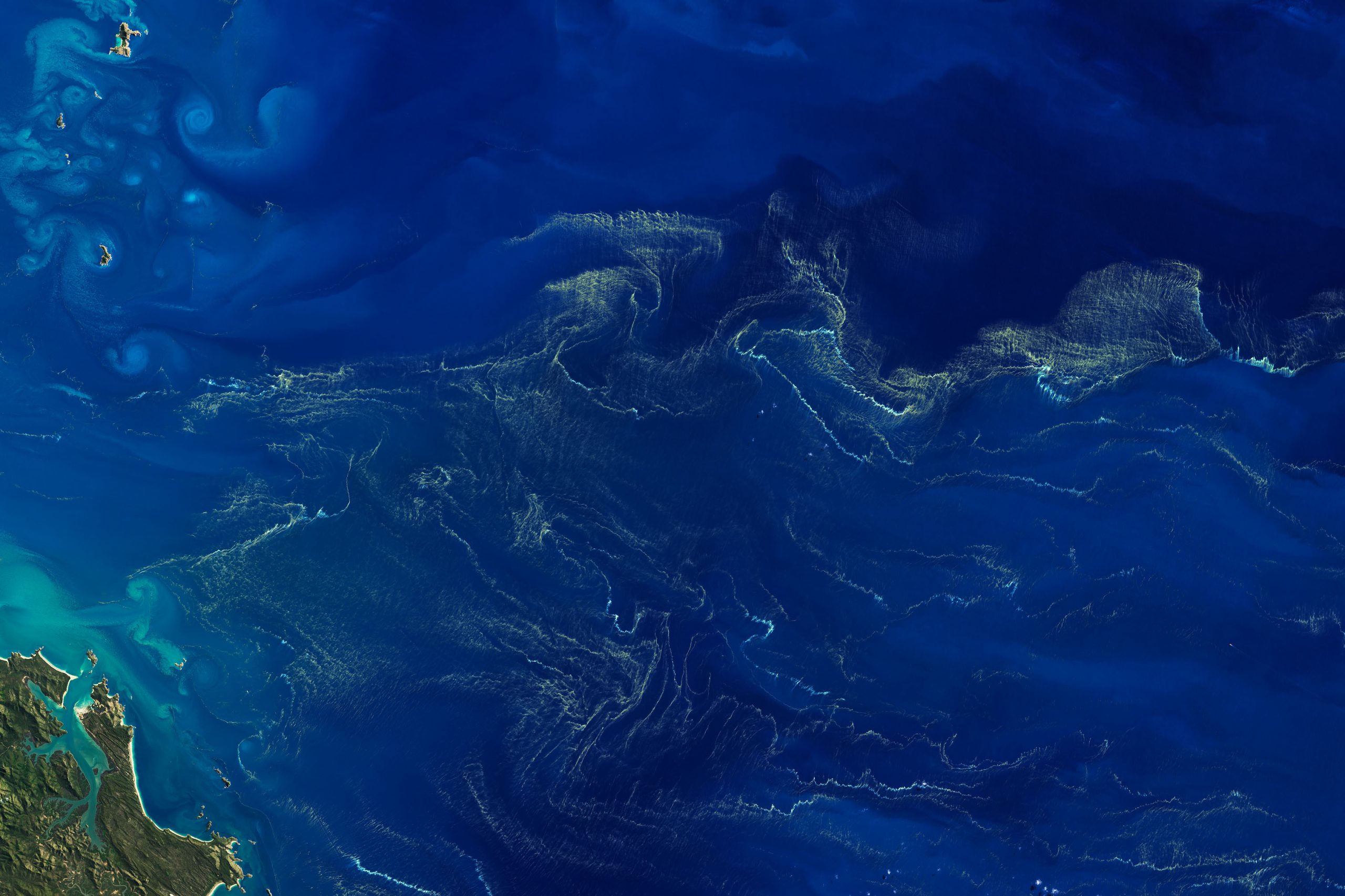
Citation:
White, A.E., Granger, J., Selden, C., Gradoville, M.R., Potts, L., Bourbonnais, A., Fulweiler, R.W., Knapp, A.N., Mohr, W., Moisander, P.H., Tobias, C.R., Caffin, M., Wilson, S.T., Benavides, M., Bonnet, S., Mulholland, M.R. and Chang, B.X. (2020), A critical review of the 15N2 tracer method to measure diazotrophic production in pelagic ecosystems. Limnol Oceanogr Methods. doi:10.1002/lom3.10353
UConn Today: Zooming in on Ocean Acidification
Assistant Professor Samantha Siedlecki and her research group are applying finer scales to the Regional Ocean Modeling System (ROMS) to better resolve the coastal ocean acidification.
Check out the full article in UConn Today: https://today.uconn.edu/school-stories/zooming-ocean-acidification/
Departmental Achievements, Spring 2020
Since the last edition of the newsletter, there has been plenty to celebrate and recognize in the department! Here you’ll find recent publications, new grants, undergraduate achievements, and awards in the Department of Marine Sciences from October 2019 through April 2020.
| Awards | Description |
|---|---|
Prof. Heidi Dierssen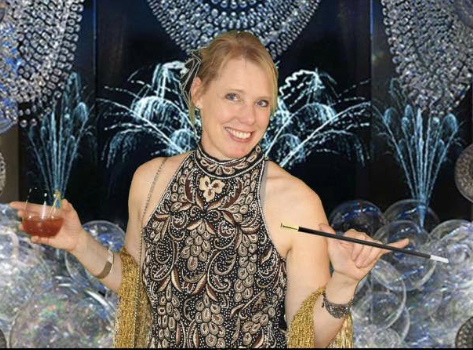 |
Dierssen was awarded with a membership in the Connecticut Academy of Sciences and Engineering. She also was selected as team leader for the PACE (Plankton, Aerosol, Cloud, and ocean Ecosystems) NASA mission. |
| Prof. Peter Auster | Auster served on the Ecological Experts Working Group for development of the Long Island Sound Blue Plan. The Blue Plan is an effort to implement marine spatial planning to address conflicting human uses of Long Island Sound while conserving natural resources. |
| Prof. in Residence Ralph Lewis | Ralph Lewis received the Dr. Joe Webb Peoples Award from the Geological Society of Connecticut for his contributions to the understanding of Connecticut’s geology over the past 40 years. |
| Prof. Robert Mason | Mason became Chief Editor for the inorganic pollutants section in the new Frontiers journal Frontiers in Environmental Chemistry. |
| Grants | Description |
|---|---|
| Assistant Prof. Hannes Baumann | Baumann received funding by Connecticut Sea Grant to study the potential re-emergence of spawning Atlantic sturgeon in the Connecticut River in collaboration with colleagues from the Connecticut Department of Energy and Environmental Protection |
| Prof. Hans G. Dam | Linking eco-evolutionary dynamics of thermal adaptation and grazing in copepods from highly seasonal environments. National Science Foundation. P.I. Hans Dam. $ 531,484. 6/1/2020-5/31/2023. The grant will support a postdoc and a graduate student. |
| Kayla Mladinich (grad student, Prof. J. E. Ward) | Connecticut Sea Grant recently funded Kayla Mladinich and the Ward Lab to help critically examining the science of microplastics uptake by oysters. |
| Tyler Griffin (grad student, Prof. J. E. Ward) | Tyler Griffin received a seed grant to study the effect of chlorpyrifos, a common neurotoxic insecticide pollutant in coastal systems, on the taxonomic composition and metatranscriptomic expression of the gut microbiome of blue mussels. In collaboration with Associate Prof. Penny Vlahos. |
| Undergraduate Recognitions | Description |
|---|---|
| Alex Frenzel (Class of 2021) | Alexandra Frenzel just returned from her study abroad in Switzerland. An honors student as well, Alex was recently informed her 2020 SURF proposal was awarded. |
| Amelia Hurst (Class of 2021) | Amelia Hurst was just accepted into the NASA Airborne Science Program. Amelia was awarded University Scholar recognition this past December, the highest distinction that the University bestows on an undergraduate. Amelia is a junior seeking a double degree in Anthropology and Marine Sciences, with honors in both. |
| Mackenzie Blanusa (Class of 2020) | Mackenzie Blanusa was accepted into the summer 2020 Cooperative Institute for Modeling the Earth System (CIMES) Research Internship Program at Princeton University. Mackenzie is a seeking a double degree in Marine Sciences and an Individualized Major titled Atmospheric Sciences, with a minor in mathematics. She is also wrapping up her UConn Summer Undergraduate Research Fund (SURF) project. |
| Publications | Summary |
|---|---|
| Allison Byrd (M.S. 2019, Associate Prof. P. Vlahos) | (Tidally resolved observations of organic carbon exchange through Eastern Long Island Sound.) |
| Brittany Sprecher (graduate student, Prof. S. Lin) | Brittany Sprecher published her dinoflagellate gene transformation work in Microorganisms. (Nuclear Gene Transformation in the Dinoflagellate Oxyrrhis marina.) |
| Assistant Prof. César B. Rocha | Napolitano, Silveira, Rocha and colleagues developed a simple theoretical model to explain the recirculation of a subsurface western boundary current off Brazil. The theory agrees well with the time-mean flow observed by Argo floats and simulated with a regional numerical model. But the numerical model displays large variability due to strong westward-propagating eddies, which are not accounted for by the theory. (On the Steadiness and Instability of the Intermediate Western Boundary Current between 24° and 18°S.) |
| Paradise, Rocha and colleagues employed a simple theoretical model to study the sensitivity of atmospheric blocking to climate change. Their model explores the mathematical analogy of blocking phenomena and traffic jams in freeways. The authors found that the present climate lies close to a boundary between a block-dominated state and is highly sensitive to perturbations to the jet stream. (Blocking Statistics in a Varying Climate: Lessons from a “Traffic Jam” Model with Pseudostochastic Forcing.) |
|
| Rocha and colleagues developed new theoretical methods to characterize the strength of horizontal convection–the flow generated by differential heating at a single surface; horizontal convection is motivated by the observation that the ocean is cooled at high latitudes and heated in the tropics. Their mathematical machinery led to new bounds on the heat flux of horizontal convection. (Improved bounds on horizontal convection.) |
|
| Chris Murray (Ph.D. 2019, Assistant Prof. H. Baumann) | Dr. Murray and colleagues discovered a fish species that is unusually sensitive to ocean acidification and warming. (High sensitivity of a keystone forage fish to elevated CO2 and temperature.) |
| Emma Cross (former postdoc, Assistant Prof. H. Baumann) | Dr. Cross and colleagues showed that fluctuations in oxygen and carbon dioxide can benefit offspring of a coastal marine fish. (Diel and tidal pCO2 × O2 fluctuations provide physiological refuge to early life stages of a coastal forage fish.) |
| Prof. Hans G. Dam | (Antagonistic interplay between pH and food resources affects copepod traits and performance in a year-round upwelling system.) |
| Associate Prof. Julie Granger and Prof. Craig Tobias | This effort involved numerous members of the community, and resulted in a comprehensive guide to insuring inter-comparability of N2 fixation rate estimates among researchers. Granger and Tobias, as well as former lab member Lindsey Potts, contributed to this effort by providing guidelines to ensure reliable N isotope ratio analyses by mass spectrometry. (A critical review of the 15N2 tracer method to measure diazotrophic production in pelagic ecosystems.) |
| Julie Pringle (M.S. 2018, Assistant Prof. H. Baumann) | Graduate alumnae Julie Pringle discovered that females in a common forage fish are growing faster and therefore survive better than males. (Otolith-based growth reconstructions in young-of-year Atlantic silversides Menidia menidia and their implications for sex-selective survival.) |
| Matt Lacerra (M.S. 2019, Associate Prof. D. Lund) | Graduate alumni Matt Lacerra showed that rising atmospheric CO2 levels at the end of the last ice age were likely due to weakening of the ocean’s biological pump. (Less Remineralized Carbon in the Intermediate‐Depth South Atlantic During Heinrich Stadial 1.) |
| Associate Profs. Penny Vlahos and Mike Whitney | Vlahos, Whitney, and colleagues found that 40% of nitrogen delivered to Long Island Sound (LIS) is primarily exported as organic nitrogen, while the rest is either buried in sediments or released as gas. (Nitrogen budgets of the Long Island Sound estuary.) |
| Prof. Peter Auster | These papers are part of a larger effort to understand the role of higher trophic level predators within marine protected areas with a focus on conserving species interactions as an element of management goals. (Coordinated hunting behaviors of mixed species groups of piscivores and associated species at Isla del Coco National Park (Eastern Tropical Pacific).) |
| Prof. Peter Auster and Chris Conroy (former postdoc) | The study was used in the recently released Condition Report for Stellwagen Bank National Marine Sanctuary and will be used to revise the management plan for the Sanctuary. (Time-series patterns and dynamics of species richness, diversity, and community composition of fishes at Stellwagen Bank National Marine Sanctuary (1970-2017).) |
| Assistant Prof. Samantha Siedlecki | (Seasonal-to-interannual prediction of North American coastal marine ecosystems: Forecast methods, mechanisms of predictability, and priority developments.) |
| (The Importance of Environmental Exposure History in Forecasting Dungeness Crab Megalopae, Occurrence Using J-SCOPE, a High-Resolution Model for the US Pacific Northwest.) | |
| (Exoskeleton dissolution with mechanoreceptor damage in larval Dungeness crab related to severity of present-day ocean acidification vertical gradients.) | |
| Prof. Senjie Lin | In collaboration with Prof. Zhi Zhou (Hainan University, China), Prof. S. Lin used genomic profiling to reveal that microplastics depressed growth and the capacity of detoxification in dinoflagellate symbionts of corals. (Microplastic exposure represses the growth of endosymbiotic dinoflagellate Cladocopium goreaui in culture through affecting its apoptosis and metabolism.) |
| Prof. Senjie Lin, Associate Prof. Huan Zhang, Brittany Sprecher | Members of the Lin Lab joined an international team which published a paper reporting development of functional genetic tools for protists (dinoflagellates and other single-celled eukaryotes). (Genetic tool development in marine protists: emerging model organisms for experimental cell biology.) |
Grad Students Enjoy #OSM20
Nine graduate students shared their research at the 2020 Ocean Sciences Meeting in San Diego, California. A total of 22 presentations were given by DMS faculty, postdocs, and students. Besides the science, folks visited the La Jolla beaches and San Diego Zoo, ate delicious Mexican food, and networked with colleagues. We’re looking forward to more conferences and sharing our science!
See the full list of presentations:
https://marinesciences.uconn.edu/2020/02/13/uconn-dms-at-ocean-sciences-2020/
DMS investigators complete full comprehensive nitrogen balances of LIS
Of the nitrogen delivered to Long Island Sound (LIS) using a 20 year time series, Vlahos, Whitney, and colleagues Found 40% of it is exported as primarily organic nitrogen (70% vs 30% as nitrate). However, 60% of the nitrogen Entering the LIS is either buried in sediments and/or denitrified to nitrogen gas and N2O.
https://today.uconn.edu/2020/02/understanding-long-island-sounds-dead-zones/
